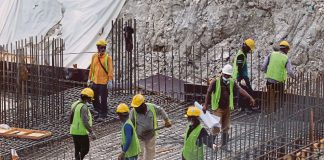PUTRAJAYA, Sept 22 — The property market’s performance, as measured by the volume and value of transactions, declined year-on-year in the first half (H1) of 2020 in line with the country’s economic contraction, said Deputy Finance Minister II Mohd Shahar Abdullah.
In H1 2020, the number of transactions fell 28 per cent to 115,000 units from 160,165 units in the same period last year while the value shrank 32 per cent to RM47 billion compared to RM68.53 billion previously, he said.
He said the property subsectors, comprising residential, commercial, industrial, agriculture, and development land, contracted between 25 and 37 per cent during the period under review.
Mohd Shahar, whose speech was read by Treasury deputy secretary-general (management) Datuk Othman Semail at the launch of the Property Market Report H1 2020 here today, said the residential subsector drove the market, accounting for more than 65 per cent of total transactions.
“The residential property overhang situation in the first half of the year worsened to nearly 32,000 units valued at RM20 billion, up three per cent from the number of overhang units as at end-2019,” he said.
The deputy minister said the primary residential property market was also impacted, with new residential properties launched totalling only about 13,000 units and sales being weak at below five per cent.
Mohd Shahar urged developers and the authorities to consider the property overhang data when determining projects to be developed and ensure the appropriate residential pricing for the respective locations.
“This is to ensure residential offerings are in tandem with demand and that (supply-demand) mismatch is minimised,” he added.
Warious policies and initiatives had been introduced to ensure housing prices were under control, he said, noting that the Malaysian House Price Index recorded 198.3 points in the second quarter of this year, a growth of 0.4 per cent versus 1.9 per cent registered in the first quarter.
“This is seen as a positive indicator for the continued sustainability of housing prices not only for the benefit of house owners but also for the stability of the country’s financial institutions,” he said.
The National Property Information Centre (NAPIC), in the Property Market Report H1 2020, said that while there was cautious optimism regarding the possibility of a gradual economic recovery following the reopening of the economy, it was highly likely that the property market would remain sluggish for the rest of the year.
According to the report, the pace of recovery would be influenced by internal and external factors such as political stability, global oil and commodity prices, and COVID-19 developments.



















